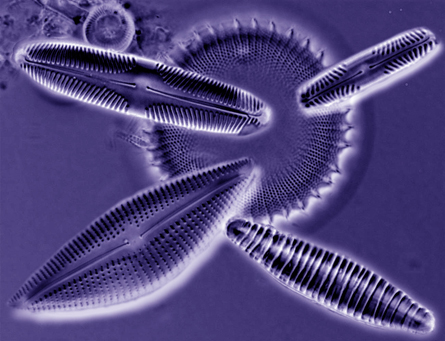A novel experiment in cleaning nitrate pollution out of water gives a new look at what’s so powerful about the diversity of life.


In lab setups that mimicked freshwater streams’ lazy pools and rushing freshets, a mix of algal species proved more than four times as efficient at taking up nitrates than a single supercleaner species living in the same kind of stream, reports ecologist Bradley Cardinale of the University of Michigan in Ann Arbor. And when he added a mix of algae to simplified stream setups lacking a variety of living conditions, or niches, the diversity bonus didn’t show up.
What gives diversity its efficiency, then, is not just some superspecies that happens to be in the mix, Cardinale concludes. Instead, the long-noted diversity bonus in nutrient uptake comes from the way a mix of species can expand and take advantage of the many different niches in an environment, Cardinale reports in the April 7 Nature.
“The implications for conservation are huge,” Cardinale says. In spite of shrinking budgets and other constraints on protecting nature, humanity can’t pick just the “best” species to save. “It’s going to be much harder,” he says, because the diversity of species itself has value.
Almost 60 studies have shown that diverse communities take up nutrients more efficiently. But the question has been why. “Is it because each species is doing something unique?” Cardinale asks. “Or is it because diverse communities [are more likely to] have a really big bad superspecies that can take your pollutants down?”
To test that idea directly, Cardinale set up 150 artificial streams and innoculated them with one, two, four, six or eight species of diatoms and green algae. The species, all common within the United States, had come from collections in the wild and had different tolerances for water flow rates, disturbance and other aspects of life in a stream. To simulate the complexity of real streams, Cardinale created a mix of water speeds and also set up a protocol for brushing away patches now and then to mimic disturbance.Then he monitored how well the various communities as a whole took up nitrates, one of the most widespread and vexing water pollutants worldwide.
The notion of diverse communities drawing strength from expanding into multiple niches and complementing each other has had great appeal, says ecologist Shahid Naeem of Columbia University. However, he says, “empirical confirmations have been the devil to come up with.”
Earlier experiments have turned up support for the idea, although possible confounding effects have made pinning down niche benefits difficult, says ecologist Jay Stachowicz of the University of California, Davis. In his own work, for example, a diversity effect disappeared — as might be predicted — when he and colleagues simulated the niche-rich world of an outdoor seaweed community in a simplified lab setting. “Cardinale has done all this in the lab and has a great handle on exactly why diversity matters,” Stachowicz says.






